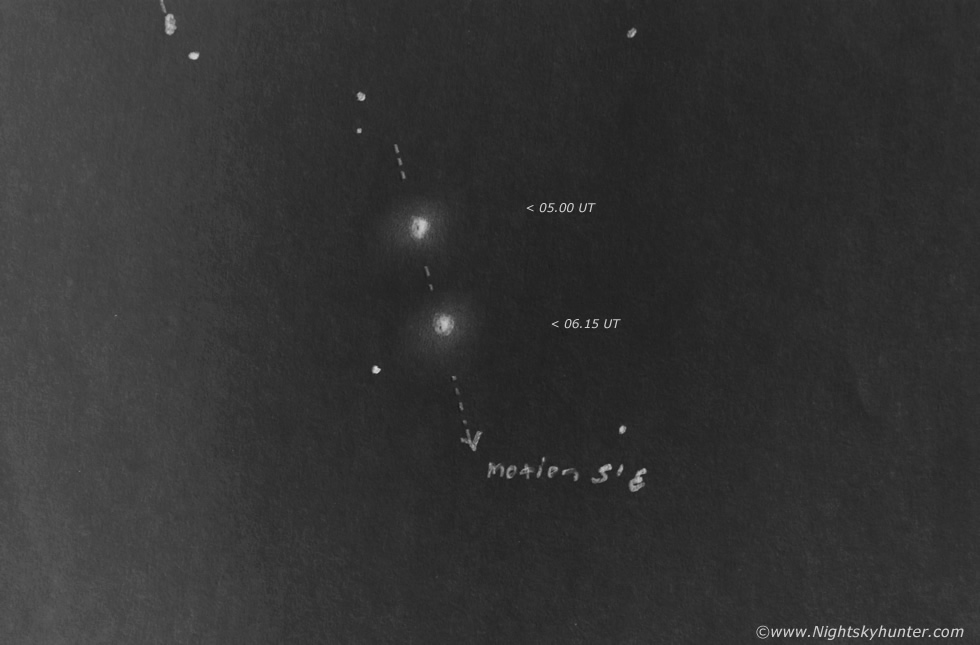C/2018 V1 Machholz-Fujikawa-Iwamoto
 |
C/2018 V1 Machholz-Fujikawa-Iwamoto |
|
|
I was eager to observe new comet C/2018 V1 Machholz-Fujikawa-Iwamoto which had just been discovered by amateur comet hunters five days earlier in the morning sky. After a period of cloudy weather the pre-dawn hours of Nov 3rd 2018 were forecast to be clear so I planned on 'meeting' this new comet then. I went to sleep then my alarm woke me at 04.00 UT to a wonderful clear dark sky, in fact, the best clear sky I have seen for some time. I changed and headed out to the back garden and it was then I realized I would never catch the comet from here due to it's low altitude so I packed my Meade 8" F/6.3 LX10 into my van then drove into the Maghera countryside to find a dark location which offered a good low view to the E. I tried several locations however trees blocked my view then suddenly an ideal vista came into view, I ended up reversing into a narrow grass lane between fields with hedges on both sides which hid me from view, the visual profile to the E was perfect.
I set up the scope and began sweeping however the low altitude was rendering stars faint and the seeing made stars within the FOV turn to blobs. The sky clouded over and began to rain so I waited and waited, then finally the shower stopped and the stars re-appeared better than ever before. The pre-dawn sky really was a place of celestial glory, Orion and Sirius sparkled like vivid diamonds akin to a scene from a Christmas card. I settled myself and observed M81, M82, M35, M31, M32, M1 and M42 then when fully dark adapted I turned the mount to the E and began a slow horizontal sweep through Virgo and a few minutes later I found the comet at 05.00 UT some 10 degrees above the true horizon and 1 degree above a strip of cloud. I was thrilled and overjoyed to finally get to see this fresh discovery, I was genuinely on a high. The comet was located to the E of naked eye Porrima and in the telescopic field it was a striking sight, my first impressions were that this comet was bright and very well formed indeed. At a casual glance it looked like an unresolved globular cluster, the coma was a well defined round form with relatively sharp edges, at centre was a white disk-like central condensation with star-like false nucleus within. On two occasions during moments of good seeing I glimpsed an elongation to the W which must have been the tail recently captured on CCD images.
I was astonished how rapidly the comet moved so I made a sketch and returned periodically to the eyepiece only to see that the comet had clearly moved. The above sketch shows this motion between 05.00 UT and 06.15 UT, during which time it moved 5'. I made a rough magnitude estimate at +8.6 however I really suspected it was brighter than this. Once the comet climbed higher within the growing twilight a sublime aqua hue could be discerned from the coma which was my final view of the comet before advancing twilight and the singing of birds ended the session. I wonder what this comet has in store?, we will find out in the next few weeks. I would like to congratulate all three discoverers for this exciting surprise comet.